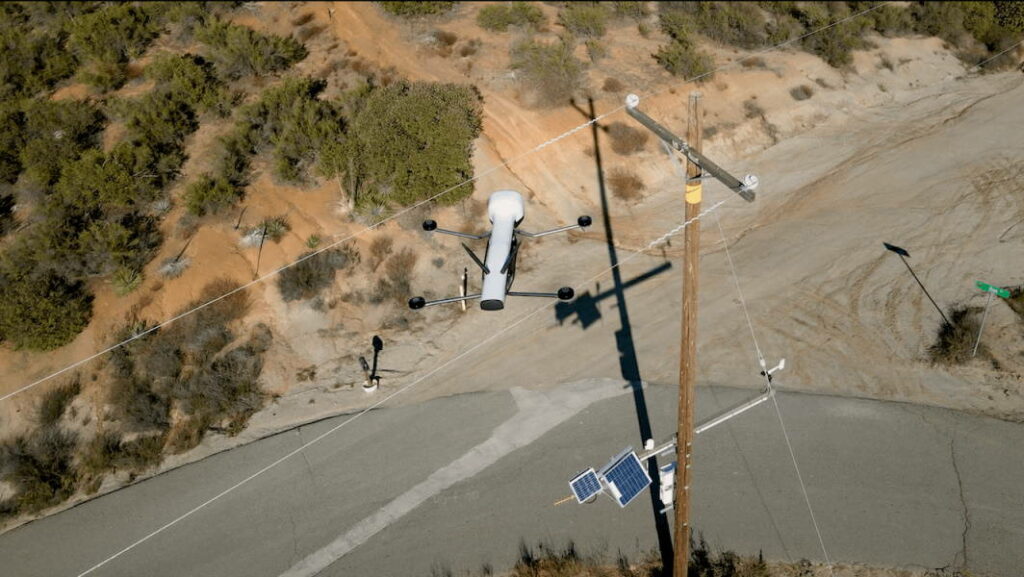

The following article is based on a blog post from Auterion, developers of a drone software platform designed to enable simple, safe and fully integrated large-scale operations for enterprise drone fleets and UAV (unmanned aerial vehicle) manufacturers.
Utility companies oversee massive critical infrastructure networks, consisting of transmission towers, distribution poles, and substations that are all connected by power lines. In the past, inspecting these critical assets that could span hundreds of miles was both expensive and time-consuming.
Now, utility companies are leveraging drone technology to quickly and efficiently collect visual data and utilize their personnel more efficiently. Drone remote inspection significantly enhances personnel safety, and allows inspectors to survey hard-to-reach areas without needing to deploy costly helicopters.
Drones equipped with advanced sensors and imaging technology allow inspectors to remotely perform a large variety of tasks, including detailed inspection of power lines and components, analyzing vegetation encroachment, and digitizing asset information. Predictive analytics layered onto drone data identifies infrastructure issues that need to be fixed so it never leads to catastrophic failures in the future.
Upgrading to Auterion
Given the relatively low cost of drone inspections, many companies have increased their cadence of inspections. For a utility company that is beginning to develop its drone program or is evaluating their existing UAS fleets for scalability, choosing an open source drone management ecosystem is more important than ever. With a worldwide community supporting a code base, output is thoroughly reviewed and vetted. Consistent progress and improvements are achieved far more quickly than with proprietary software due to the collaborative and growing nature of an open ecosystem, in which users can collaborate to solve problems in innovative ways and learn from one another.
Adopting or upgrading to open source allows organizations to be free from the constraints of any single company’s product development decisions. Having access to abundant choices for airframe, sensors, etc. provides flexibility and assurance that critical operations are never again threatened due to one single manufacturer’s geopolitical issues, leadership changes, manufacturing delays, or financial difficulties.
Every investment made into a solution powered by Auterion means that the training and equipment you obtain today can be effortlessly translated into your future workflow – even if you add different or newer airframes along the way. This is the advantage of an open source ecosystem – a wide variety of choices supported by the same reliable foundation that is bigger than any one manufacturer or product.
To learn more about drones in utilities and how Auterion’s open source approach is the key to robust and scalable drone fleets, get in touch here.







Related Posts
New Drone Fires Thales Missile in Unmanned Air Combat Milestone
UAS Startup Accelerator Awards 3M in Funding
US Navy Orders Unmanned Tactical Resupply Aircraft